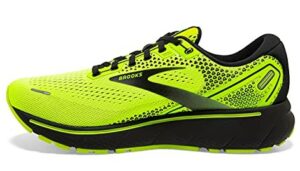As a runner, whether you hit the tarmac on a regular basis or prefer getting lost on the trails, the bulk of your activity is repetitive (more for road runners than trail runners, but repetitive nonetheless). In time, repetitive motion can lead to injuries, strains, and even mental burnout or simple boredom when you’re not getting the most from your running anymore. What’s the answer to combat all these?
Cross-training is an all-encompassing term for any and all sports activities you choose to do to complement your running. Whether you alternate between running and biking to give your knees a rest during intensive training weeks, or you swear by yoga and daily stretching, all of it counts as cross-training.
Some of us practice cross training without even knowing it: simply going to a spin class once a week or consistently working on your core to keep your running stable and strong also counts. So, what should you know about cross-training if you’re new to running, already cross train, or are recovering from injuries?
In this article, we’ll look at:
- What cross-training is and how you can do it;
- The benefits of cross-training for runners;
- The best ways to integrate cross-training into your running training program.
What Is Cross-Training?
When you hear the term cross-training, especially in more complex contexts like “cross-training program,” don’t be fooled into thinking this is something reserved for elite athletes. It is simply a term assigned to any type of workout that is not in your main sport, but can benefit your sport in some way.
This means that runners who also bike, do strength training, stretch regularly or go to yoga and Pilates classes are basically cross training. All of these types of exercise help your running in some way, from reducing your risk of injury to building muscle strength, which all lead to better running results.
However, doing different types of runs (e.g. interval training or hill runs) doesn’t qualify as cross-training. That’s because, ultimately, your main activity is still running. So, when you look for cross-training programs or workouts, try to identify those activities that are in some way complementary to running and will benefit you over the longer term. We’ll go into more details below.
What Types of Cross Training Can Runners Do?
Runners work their whole bodies in training and can benefit from topping up both their muscle strength and flexibility, as well as their cardiovascular capability, from doing a complementary form of exercise to their usual running practice. Moreover, as a runner, you can turn to some other workout routine simply to combat boredom or plateauing.
Here are some suggestions of cross-training workout options for runners.
Biking / Spinning
Jump on the road bike once a week to give your joints a little rest while still working on your cardio fitness. If you live in a quiet area, road cycling puts less strain on your body overall than mountain biking, and you can take it easy by picking a flat route. At the same time, mountain biking can be great fun for outdoor nature lovers.
No option to go outside or no bike? A spin class is an excellent way to work on your cardio system while building some great leg strength. Plus, working out in a group, possibly with your friends, will inject some fun into your workout routine.
Flexibility Exercises and Classes
To reduce your risk of injury and to provide you with a relaxed, low-tempo activity alongside your running, opt for a yoga class or flexibility and balance classes like Body Balance. These are great fun with friends or just by yourself and work on your range of motion as well as on your core strength, which is a great benefit to runners.
If you can’t head to a class, there are lots of free YouTube videos and channels you can follow, or sign up to an app and configure a cross-training routine you can do once a week in addition to your post-run stretches.
Strength Training
A classic addition for runners: strength training once or twice a week in the gym or at home will pay dividends once you cross the start line of your dream race. Lots of scientific studies prove that strength training is great for runners, allowing you to develop strong muscles which give you added power, stability and speed when running.
Swimming
When we run, we tend to slouch forward and perhaps not pay as much attention to our upper bodies as we should (especially during long runs and when we’re tired). Swimming is a great way to increase shoulder strength and flexibility and open up your whole upper body. It will benefit your posture, which in turn does wonders for your running form.
Swimming is also great cardio, with minimal impact on your joints.
Nordic Skiing
A great way to keep working on your cardiovascular fitness while also building whole-body strength in winter is to practice Nordic skiing. This sport really builds your VO2 Max capacity, while keeping you moving fast in the mountains. It’s ideal for trail runners who want to stay close to nature in winter, and it’s good for your joints, too. No wonder lots of top trail running champions are also great skiers.
Walking / Hiking
The perfect complement for runners training for mountain races or a great way to cross train with the whole family on vacation, long walks or hikes continue to build your aerobic fitness while also developing leg strength. Many ultra-distance runners hike with heavy backpacks to get used to the feeling of carrying lots of kit. Moreover, this is a way to get used to spending long days outdoors, practicing your nutrition and hydration strategies, while taking some pressure off your joints as you’re not stressing them by running.
Top Benefits of Cross-Training for Runners
Countering the repeated strain from running on the road, building strength and flexibility and refreshing your mind when you’ve had enough of running, here are some of the main reasons you should consider cross-training:
- Add variety in your training program. Runners turn to cross-training to stay active while avoiding getting bored with running. Rather than running every day, research shows that diversifying your form of exercise keeps you more engaged and interested in your workouts. Additionally, varying your movements and the pressure you put on your body helps avoid injuries.
- Build complementary skills and strength. Through strength & conditioning workouts, you can focus on problem areas such as weak core muscles or developing leg strength for added speed.
- Develop cardiovascular system. Cross-training helps you keep moving and developing your cardiovascular system while taking away the strain of running on your joints or moving the pressure to different parts of your body. Swimming, cycling or Nordic skiing are all great cardio-heavy activities that hit your body differently from running.
Recovering from injuries. When you’re recovering from an injury or starting to run again from a period of rest, cross-training helps keep you active while not overdoing it from a running perspective. It can also be a great way to focus on rehabilitating the specific injury.
- Keeping workouts fun. Finally, cross-training activities allow you to rope in some friends, get active with a variety of exercises in a group setting, learn a new skill or just have fun. You can become a stronger runner by allowing yourself to switch off, vary your training and engage in a wide range of ways to be active, rather than obsessively only focus on running training. And your level of fitness will improve in parallel!
How to Add Cross-Training to Your Running
Adding a different type of physical activity to your regular workout routine can be a bit of a pain when you’re already focusing on getting your schedule to fit with a marathon training plan, for example. However, the great thing about fitting in the odd cardio workouts or a fun game of tennis is that they’re commitment free and will still make you a better runner!
Here are some tips for fitting cross-training into your running schedule:
- Schedule in the must-do sessions. Stretching after your runs or fitting in strength training is non-negotiable. So, start with these sessions and fit in 1-2 sessions per week, either after your runs or on a non-running day.
- Substitute your recovery runs. Depending on how your body feels, you can switch a recovery run to the bike or replace it with a swim or a long walk. You’re still getting an aerobic workout, keeping your heart rate low, and moving your body, but you’re avoiding any joint pain.
- Listen to your body. It’s a great idea to switch to cross-training when you’re feeling sore or recovering after a race or big event. Stay off running for a week after a big race, but do some gentle walks, swims and bike rides if you want to engage in active recovery. Similarly, if you have a niggle or ache or pain in your legs from a hard workout, you can choose to substitute an upcoming run with a swim, for example.
- Pick a complementary workout. You’ll get the best results for your running if your cross-training exercise targets the same muscles or your cardiovascular system. Consider what you want to get out of your workout: endurance, strength, flexibility? Any of them can be of great benefit.
- Don’t over-train. Simply because you’re cross-training, this doesn’t mean you can do more exercise without still running the risk of fatiguing or injuring yourself. Cross-training is complementary and can substitute some running sessions, but overall, you shouldn’t neglect rest and recovery, too.
- Make it fun. Choosing activities that you enjoy or group exercise classes that you can do with friends can be a great mental boost and you’ll be more likely to do them. Running is often a solitary sport for most of us, so signing up for a spin class or going for a hike with friends offers you a good balance to that.
Why Cross-Training Is Great for Runners
The variety of activity that cross-training provides for runners is extremely beneficial. Avoiding repetitive stress injuries, over-training and mental fatigue, engaging in cross-training keeps runners interested and active even through the odd period of physical limitation (e.g. a niggle or a sprain). Moreover, complementing your running routine with strength, flexibility and aerobic training will make you a better runner over the longer term. And it will help you have more fun, too!


























